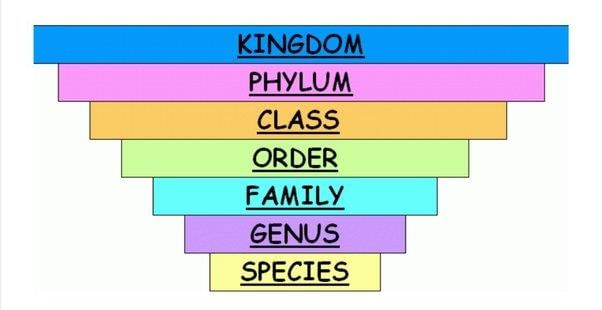NEET Exam > NEET Tests > Test: Taxonomic Categories (NCERT) - NEET MCQ
Test: Taxonomic Categories (NCERT) - NEET MCQ
Test Description
15 Questions MCQ Test - Test: Taxonomic Categories (NCERT)
Test: Taxonomic Categories (NCERT) for NEET 2025 is part of NEET preparation. The Test: Taxonomic Categories (NCERT) questions and answers have been prepared
according to the NEET exam syllabus.The Test: Taxonomic Categories (NCERT) MCQs are made for NEET 2025 Exam.
Find important definitions, questions, notes, meanings, examples, exercises, MCQs and online tests for Test: Taxonomic Categories (NCERT) below.
Solutions of Test: Taxonomic Categories (NCERT) questions in English are available as part of our course for NEET & Test: Taxonomic Categories (NCERT) solutions in
Hindi for NEET course.
Download more important topics, notes, lectures and mock test series for NEET Exam by signing up for free. Attempt Test: Taxonomic Categories (NCERT) | 15 questions in 15 minutes | Mock test for NEET preparation | Free important questions MCQ to study for NEET Exam | Download free PDF with solutions
Test: Taxonomic Categories (NCERT) - Question 1
Which of the following statements is not correct?
Detailed Solution for Test: Taxonomic Categories (NCERT) - Question 1
Test: Taxonomic Categories (NCERT) - Question 2
In a taxonomic hierarchy, family is interpolated between
Detailed Solution for Test: Taxonomic Categories (NCERT) - Question 2
Test: Taxonomic Categories (NCERT) - Question 3
Which one of the following has least-similar characters?
Detailed Solution for Test: Taxonomic Categories (NCERT) - Question 3
Test: Taxonomic Categories (NCERT) - Question 4
The study of relationships among different organisms is called _________
Detailed Solution for Test: Taxonomic Categories (NCERT) - Question 4
Test: Taxonomic Categories (NCERT) - Question 5
Basic unit or smallest taxon of classification is
Detailed Solution for Test: Taxonomic Categories (NCERT) - Question 5
Detailed Solution for Test: Taxonomic Categories (NCERT) - Question 6
Test: Taxonomic Categories (NCERT) - Question 7
Sexual reproduction must involve parents from _________
Detailed Solution for Test: Taxonomic Categories (NCERT) - Question 7
Detailed Solution for Test: Taxonomic Categories (NCERT) - Question 8
Detailed Solution for Test: Taxonomic Categories (NCERT) - Question 9
Test: Taxonomic Categories (NCERT) - Question 10
Cats and lions belong to the family called ________
Detailed Solution for Test: Taxonomic Categories (NCERT) - Question 10
Detailed Solution for Test: Taxonomic Categories (NCERT) - Question 11
Test: Taxonomic Categories (NCERT) - Question 12
Animal kingdom is classified into different phyla based on ____________
Detailed Solution for Test: Taxonomic Categories (NCERT) - Question 12
Detailed Solution for Test: Taxonomic Categories (NCERT) - Question 13
Detailed Solution for Test: Taxonomic Categories (NCERT) - Question 14
Detailed Solution for Test: Taxonomic Categories (NCERT) - Question 15
Information about Test: Taxonomic Categories (NCERT) Page
In this test you can find the Exam questions for Test: Taxonomic Categories (NCERT) solved & explained in the simplest way possible.
Besides giving Questions and answers for Test: Taxonomic Categories (NCERT), EduRev gives you an ample number of Online tests for practice
Download as PDF















